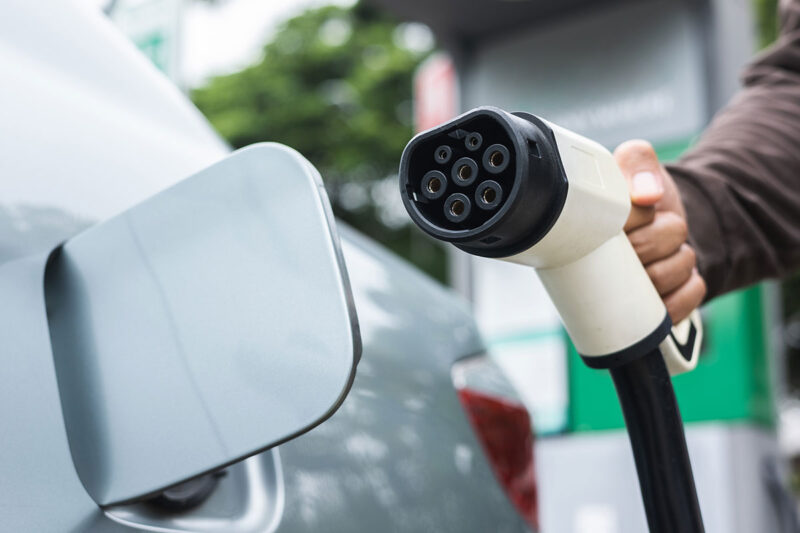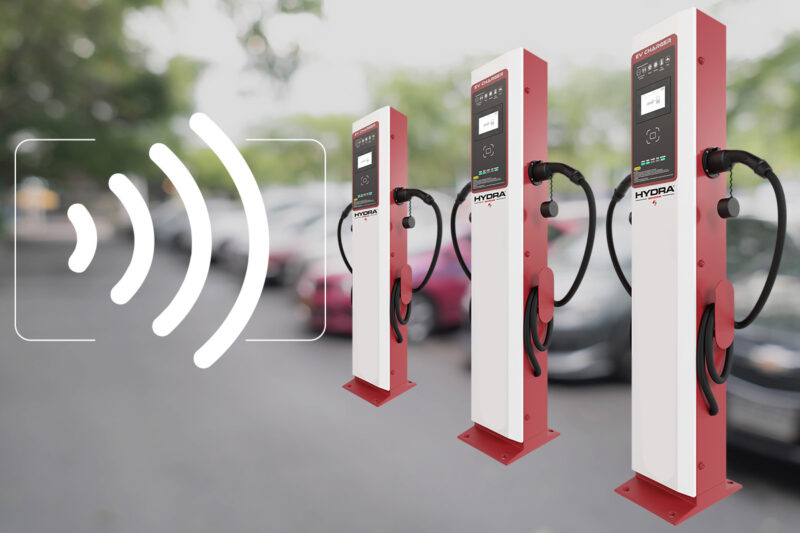The speed, or power, of your home EV charger is dependent on two things: The Electrical Power available from the house and the charger built into your car.
First lets look at the charger and battery on your EV
As your home uses an AC (Alternating Current) electrical supply and automotive EV batteries store DC electricity the power needs to go through a convertor or charger which is built into your EV.
Most manufacturers now fit 7kW chargers to the vehicle but some, like Renault and Mercedes are fitting 11kW, 22kW or higher capacity chargers. This means the maximum power it can accommodate to recharge your EV batteries is 7kW. Even if you hook up to a faster 22kW EV chargepoint the car will limit the power drawn to 7kW.
If you have an EV with an 11kW onboard charger, it can still connect to a 7kW supply like the Hydra Zodiac but if you plugin to a 22kW supply at a public charger or at the office for instance, it will only charge at 11kW. While this doesn’t sound much different to a 7kW it is 50% ‘faster’ so a 5-hour 7kW charge session will only take three hours when utilising the full 11kW.
Can I fit an 11kW charger at home?
Yes, and no. A 7kW chargepoint like the Zodiac needs a 32Amp, 240v electrical supply. If you only have a 16Amp 240v supply you’ll be limited to 3.6kW. Similarly, if you want MORE power from your chargepoint you’ll need MORE power to feed it. The Hydra Zodiac 22kW chargepoint (no-one actually makes 11kW chargepoints) requires a Three-phase electrical supply normally found in commercial buildings.
There are very few residential properties with a three-phase 400v+ electrical supply so installing a 22kW chargepoint is impossible without first upgrading your electrical supply.
This is possible, but the cost would be prohibitive and not really worth it just to get a slight reduction in recharging times.
But I’ve seen adverts for 150kW chargers!
Any chargepoint promising to deliver more than 43kW* is going to be a DC (Direct Current) charger. As these feed DC electricity they can bypass the onboard charger/convertor and feed the DC battery direct. For most electric vehicles this means you could charge from anything between 100kW to 150kW when hooked up to a charger such as the Hydra Medusa or Hydra Goliath.
Some Charge Point Operators do offer Ultra-Rapid 350kW chargers, usually found at motorway service stations, and can recharge a vehicle very quickly if your EV can handle it.
Charger or Charge Point?
These terms have become interchangeable but they are actually very different. A charger is the device which takes power from an AC electric outlet, converts it to DC and recharges the battery. These are almost always fitted to your EV from the factory and it is what that charging socket on your EV connects to.
A charge point is the device fitted to the wall of your house, in the garage or at some public or workplace locations. It simply takes a power feed from the main consumer unit (fusebox) and delivers it via socket or charging cable to your EV.
While a charge point does have a bunch of other technical features to make the charge point safe and secure for domestic use it is, essentially, a power socket.
However, this does not mean you can just install what is known as a ‘command socket’ to your house and connect your EV, the feed will be permanently live, it won’t allow scheduled charging and your EV will probably not even charge from it. They are pre-programmed to communicate with the chargepoint to start and stop the charging sessions. If it cannot communicate then it will not charge.
*The dual output Hydra Genesis can charge two vehicles at up to 43kW each


